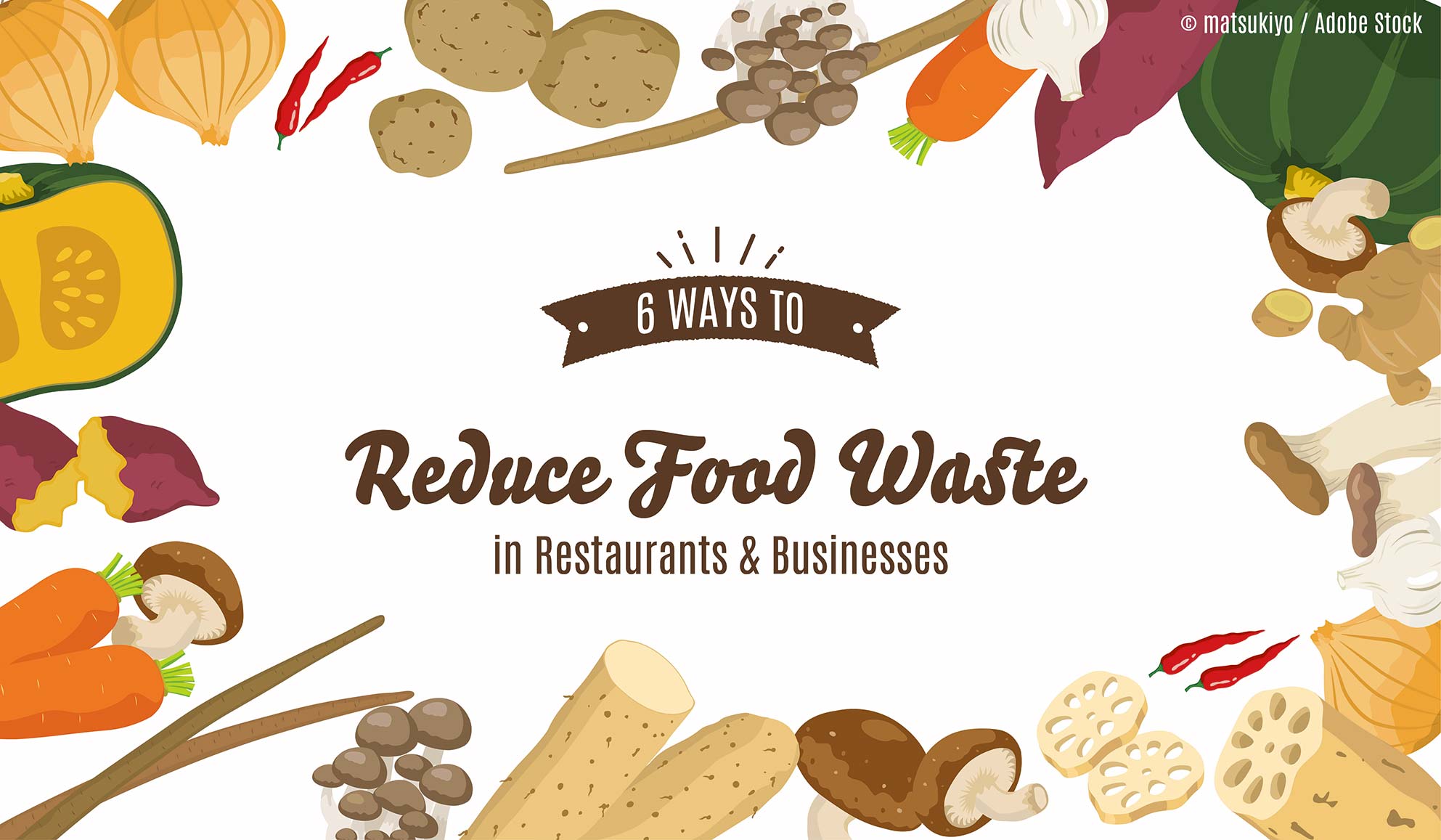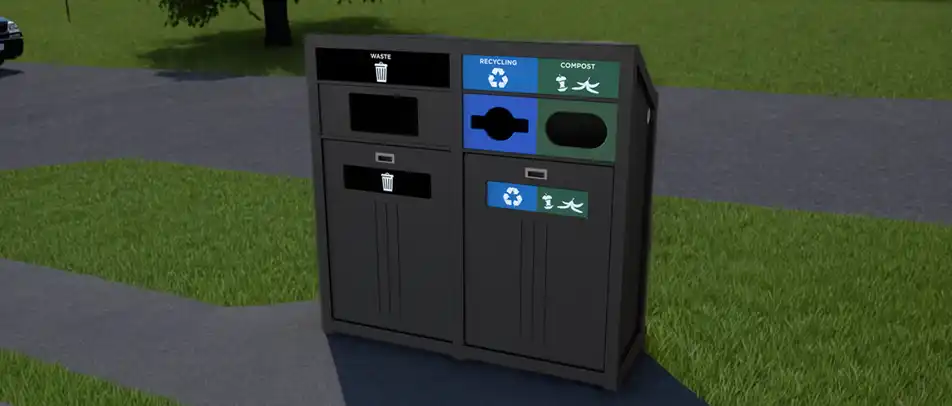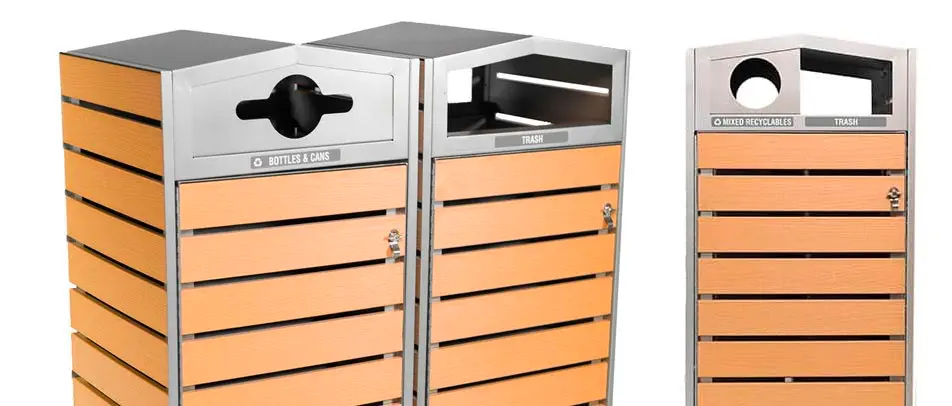
When running a food service business, generating profits relies on cutting excesses. Therefore, any technique that can trim costs will help the bottom line, including different ways to reduce food waste in restaurants. When you pay attention to how foods or ingredients are stored and used, you can dramatically decrease the waste produced.
However, reducing food waste in restaurants and businesses can be a tricky balancing act. Your customers want variety, so you must purchase different ingredients and keep up with the demand. When you stock and use a large amount of perishable inventory, excesses are inevitable.
The key is to pay attention to where your food comes from and make efficient choices. Even small changes like adding recycling bins may add up to significant differences in your profit margins. So, let’s explore six different restaurant food waste solutions and ways to reduce food waste in businesses:
Food waste log
When you dispose of leftover food, the quantity might not seem significant for one day. However, it becomes an eye-opener if you add up the amount over time. By keeping track of food waste, you can identify where the problem originates and reduce excesses.
Making a food waste inventory can seem tedious, but it provides vital information. You will gain insights into how your operation buys, stores, and uses food. Log everything that gets wasted and the reasons why. Everything from overbuying to not using up leftovers might be a factor. Reviewing the daily logs will give you a bigger picture of handling food waste in your business. Then, you can create a plan on how to be more efficient.
Food stock control procedures
Learning to manage food inventory can be challenging:
- You need to pay close attention to the best-before dates to avoid spoilage.
- Figure out the best strategy to rotate stock efficiently.
- Find a possible way to use the fresh ingredients before they become waste.
Use your senses to check out the food items by touching, tasting, and smelling them. Doing this will give you a better idea of their condition and usability. Train your staff on inventory management procedures and make clear and concise guidelines for them to follow—the more eyes on your stock, the better.
Simple menu and food offerings
Depending on the size of your menu or products, there can be hundreds of food items. If possible, try to scale back your offerings. A complex menu increases the challenge of using up everything without food waste. Instead, focus on popular products and simple recipes.
For restaurants, create an optimized menu that uses common ingredients. When numerous dishes share similar recipes, you can use up items quicker and have less inventory to manage. This is one of the most effective restaurant food waste solutions for ensuring fresher ingredients and reducing excess.
Seasonal food
Much of our food travels great distances to arrive at our plates. When you need specific ingredients that are out-of-season, a standard business practice is to purchase them from faraway places. The drawback is these items could be left in storage for long periods as they move between locations. When you finally receive the deliveries, the food might not last long in freshness because it is already past peak condition.
Instead, do your best to use locally grown ingredients in your offerings. That way, the food is picked at its peak of freshness. When food is local and in season, your inventory will also last longer, and restoring inventory can happen quicker. To accommodate seasonal food, update your menus every few months based on what ingredients might be available—this approach is one of the ways to reduce food waste in restaurants effectively.
Composting
Composting is an excellent way to use up food instead of wasting it. A recycling program takes your expired or scrap foods, turning them into beneficial compost. It helps gardens to thrive and enables them to grow healthier produce. Best of all, you reduce your environmental impact by not throwing food waste into landfills.
Consider selling your compost to local farms where you buy your food. This way, you create a mutually supportive business arrangement for both the buyer and seller. It is a complete life cycle of food that benefits everyone.
Donation program
No matter what you do, your business might still generate a bit of food waste. There could be remaining inventory that won’t get used, which is a shame because people go hungry every day. What if there is a way to deliver this food to local communities?
Your company can partner with a charity that accepts food donations. These organizations have the infrastructure to distribute items quickly to families, food banks, and homeless shelters. Implementing a donation program is an excellent idea if you can’t use up your food by the best-before date. The bottom line is that your leftovers can help those in need.




































































































































 Three Ways to Engage Teams and Clients to Maximize Your Recycling Program Engagement
Three Ways to Engage Teams and Clients to Maximize Your Recycling Program Engagement  How to Integrate Accessibility Into Your Sustainability Planning
How to Integrate Accessibility Into Your Sustainability Planning  Why Park Benches Can Promote Workplace Well-Being
Why Park Benches Can Promote Workplace Well-Being 
